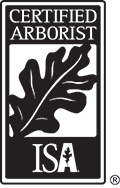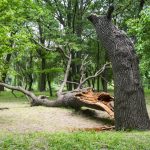The air is getting crisp and the leaves are changing color all across Colorado, but why do leaves change color? This is the infamous question everyone seems to ask during the autumn season so let’s break it down. Plants are considered Autotrophs which means they make their own food. Humans are Heterotrophs, which means they rely on an external source for food. The process of making food for energy in plants is called Photosynthesis. This process takes place in the leaves with the help of a green pigment/chemical called Chlorophyll. During this process, plants take in sunlight, carbon dioxide and water, then turn it into oxygen and energy (glucose) to survive off of. Plants work hardest in the summer and fall to store up a reserve of energy for the dry months of winter which have shorter periods of daylight. Once winter comes around, trees go through plant hibernation called dormancy. During this time, metabolic rates slow down and run off the small amount of energy saved in their roots.
During the late spring and summer months, most trees vary from light to dark green in color. Since there is an abundance of chlorophyll in the leaves, only the green pigment shows while the other colors are absorbed. Green light is reflected through the leaf because the pigment cannot absorb it. During summer, there may be orange, red and yellow pigments in the leaves, but they are covered by the large amount of green chlorophyll. Once trees begin to prepare for dormancy, those green pigments begin to fade so other pigments can be seen. In the fall, purples and reds begin to emerge and the leaves start showing off their beautiful colors. This is due to glucose (energy) being trapped in the leaves. Any leaves that begin to turn brown are essentially the waste that is not needed by the plant anymore. These leaves eventually drop and break down into organic matter which helps fertilize the tree and restarts the annual cycle.
Below are the types of different pigments found in plants:
- Chlorophyll A: lighter green, most abundant pigment, absorbs blue-violet light
- Chlorophyll B: darker green, absorbs red and blue light
- Beta-Carotene: orange
- Xanthophylls: yellow
- Anthocyanins: reds/purples










